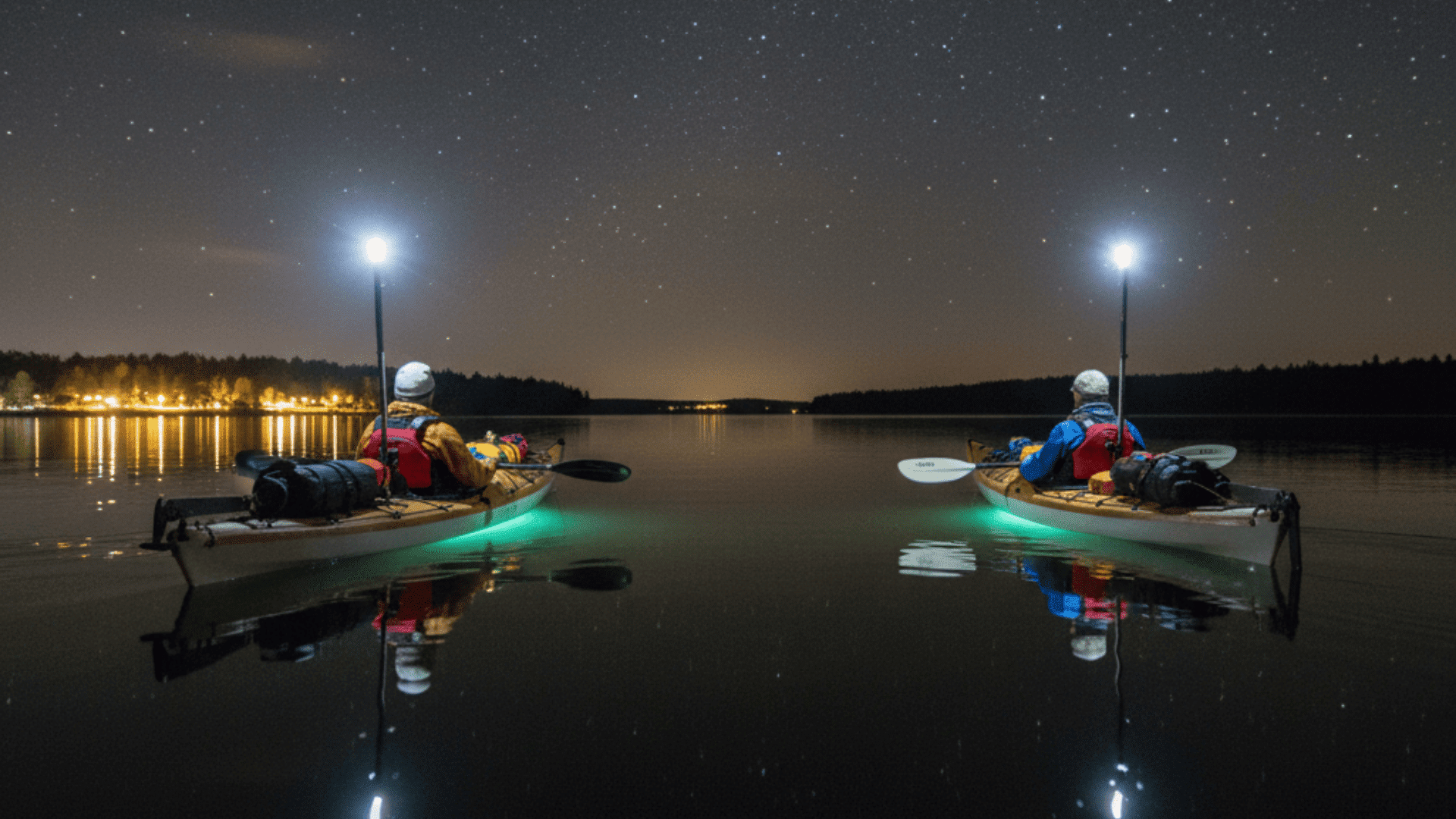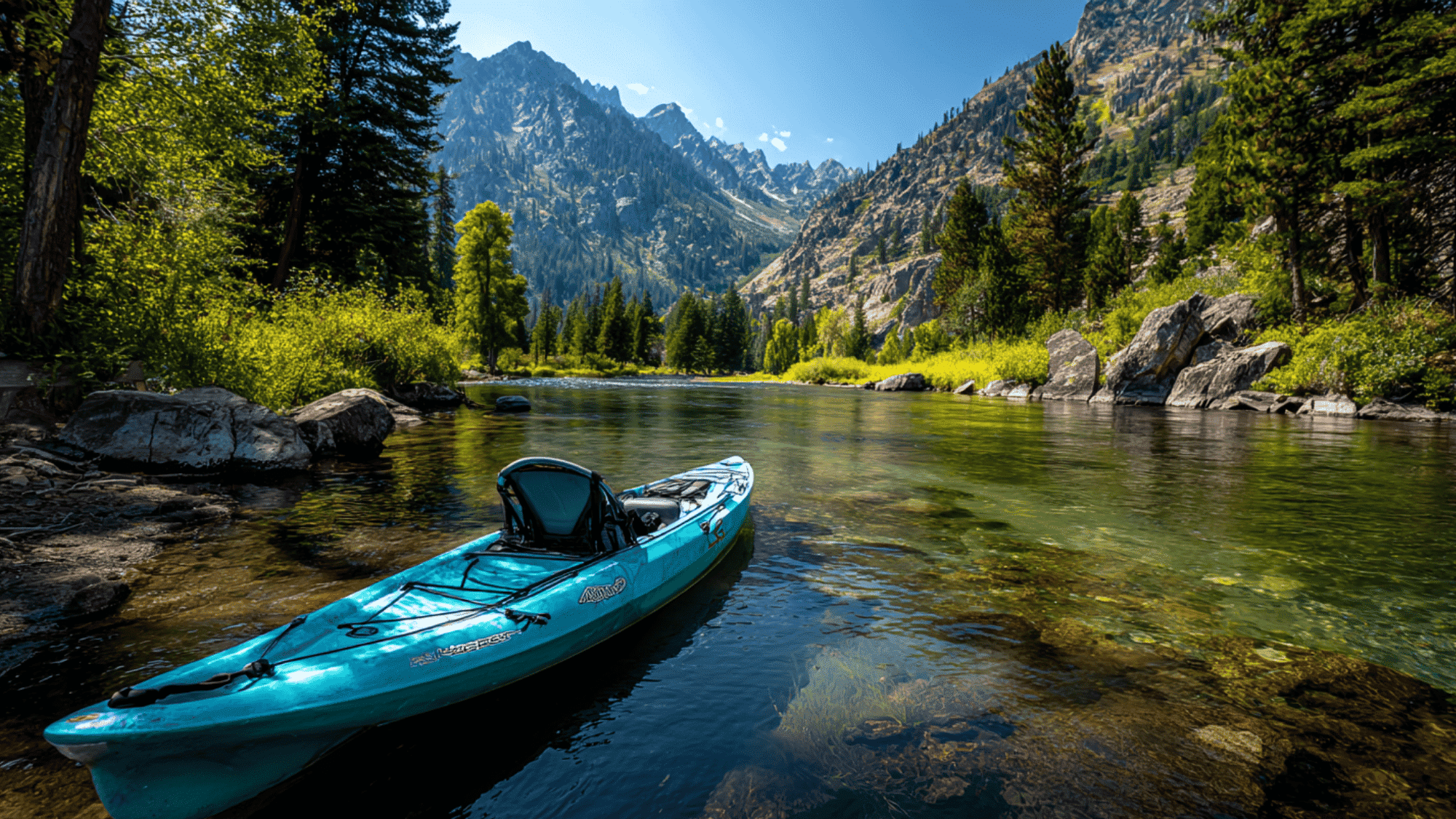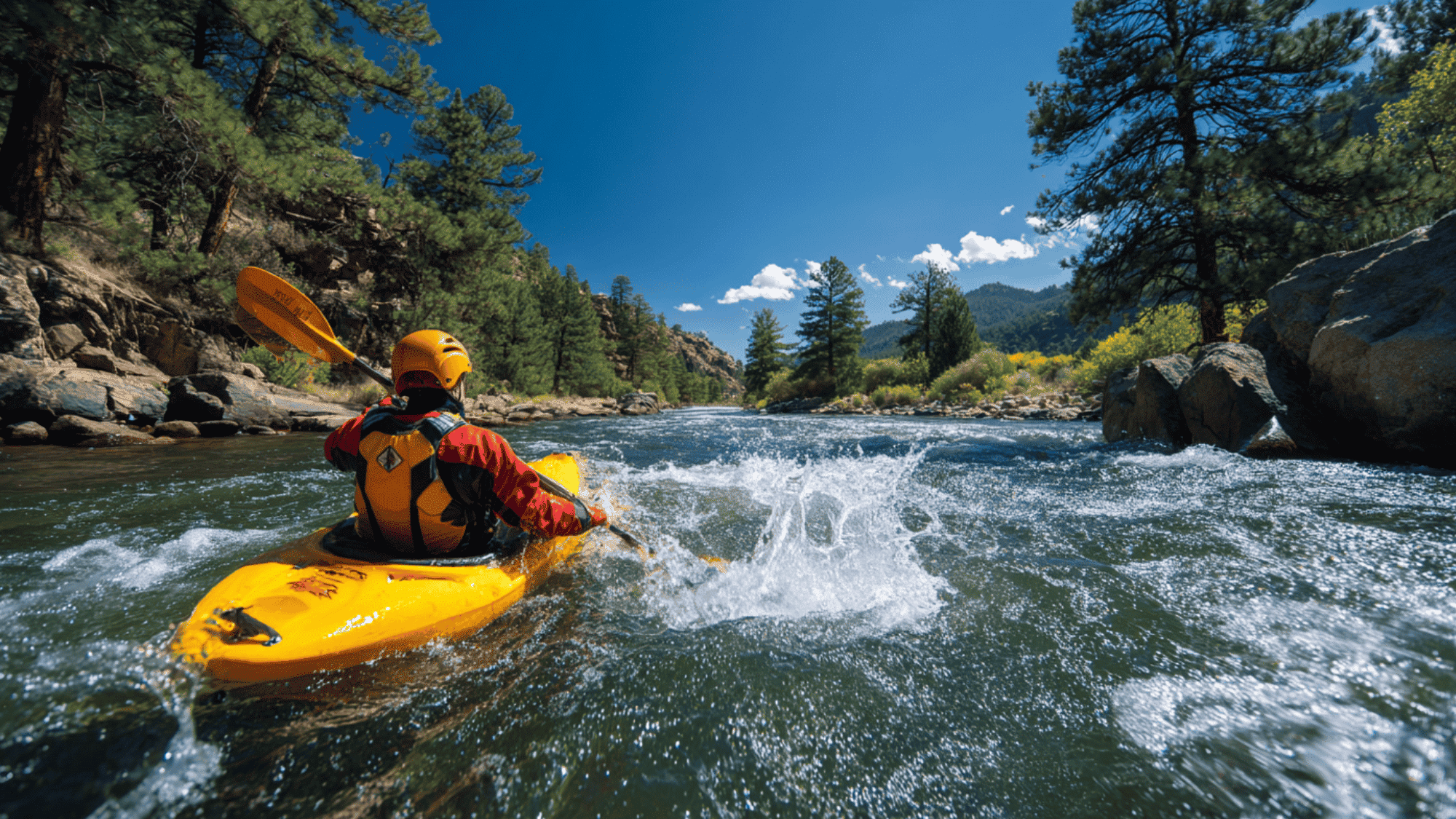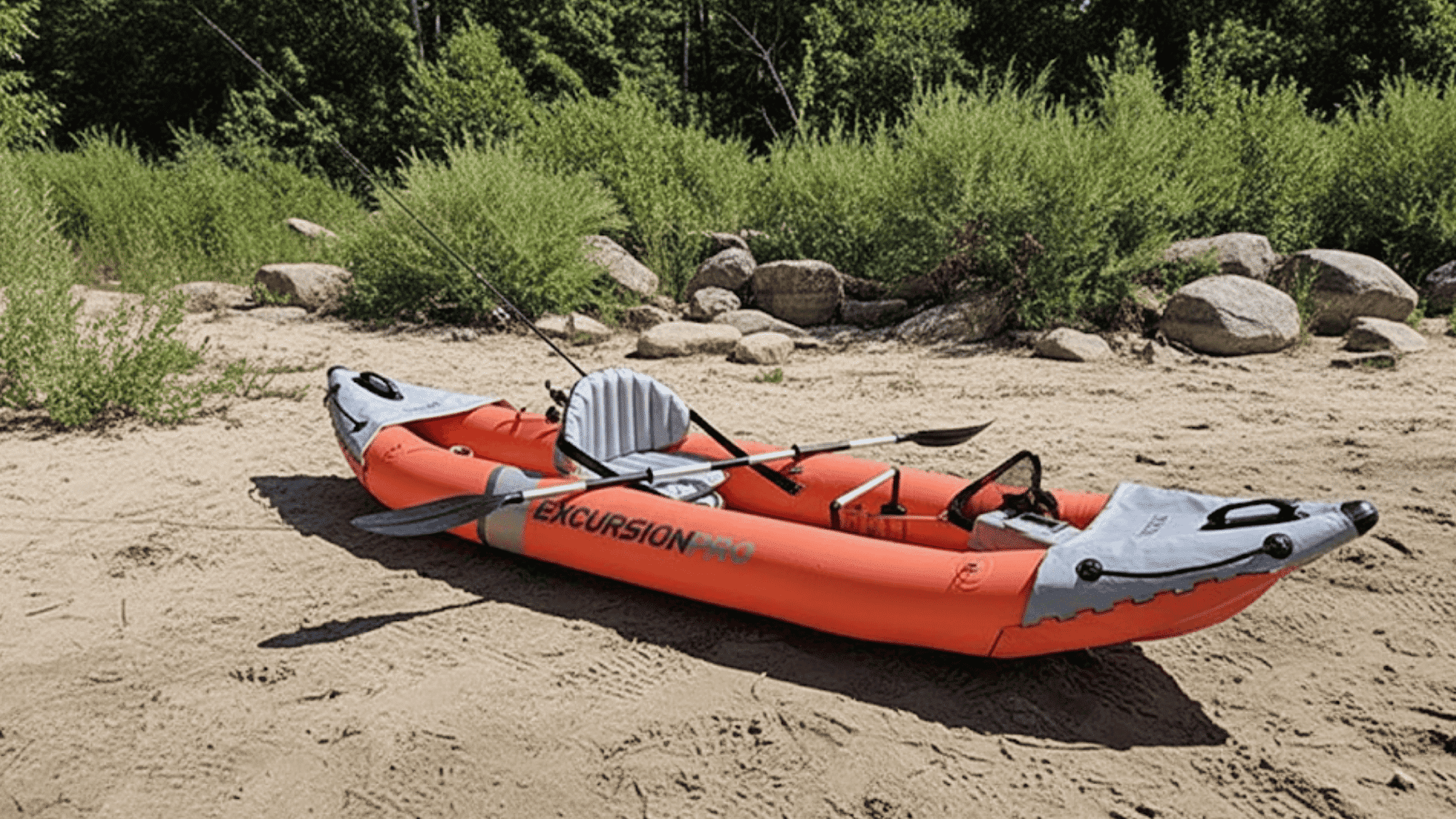Kayaking isn’t just a fun water activity. It’s also one of the most effective full-body workouts you can enjoy outdoors.
Each paddle stroke engages multiple muscles as you move forward, stay balanced, and control your kayak across lakes, rivers, or open water.
So, what muscles does kayaking work? Almost all of them. Kayaking targets your back, shoulders, arms, and core, while your legs provide stability and balance.
The result is a workout that builds strength, endurance, and coordination simultaneously.
Kayaking improves fitness, strengthens your body, and delivers the benefits of exercise while providing an enjoyable experience on the water.
The Science Behind Kayaking as a Workout
Kayaking is a repetitive exercise that engages multiple muscle groups simultaneously.
Every paddle stroke starts in your core muscles, moves through your back and chest, then finishes with your arms and shoulders working together.
Each stroke has three main parts: catching the water with your paddle, pulling it through the water for power, and lifting it out to initiate the next stroke.
Your muscles rotate your body, pull against the water’s resistance, and keep you stable in the kayak.
Water creates natural resistance that gets stronger when you paddle faster or harder. This resistance builds endurance in your muscles without making them bulky.
Since you’re sitting down and supported, kayaking is easy on your joints while still providing a great workout that lasts throughout your entire paddling session.
Muscles Worked While Kayaking
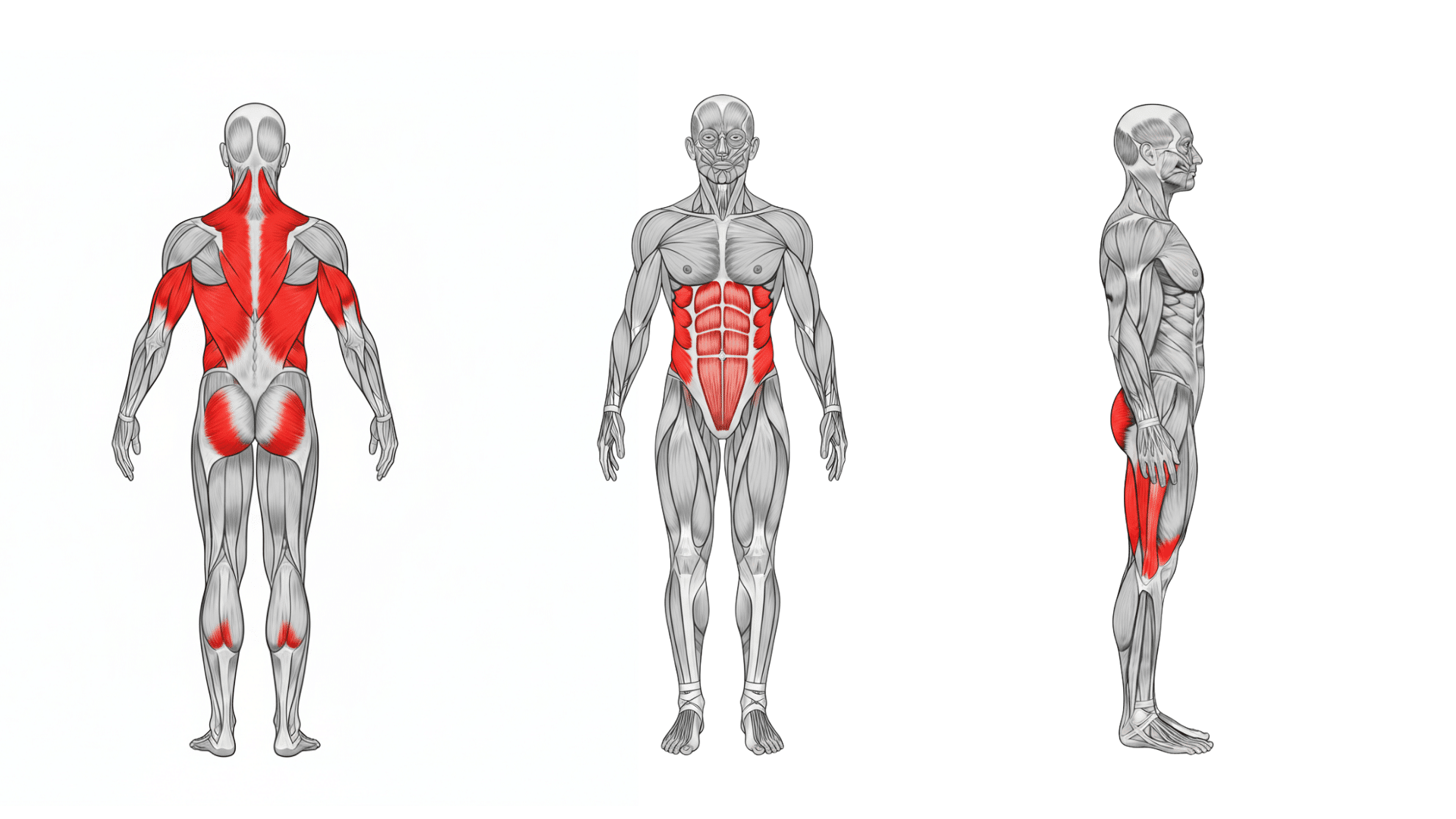
Kayaking engages nearly every major muscle group through the repetitive motion of paddle strokes and the constant need to balance on the water.
Below is a breakdown of the muscles that work hardest and how each contributes to efficient paddling.
1. Upper Body Muscles
The upper body provides most of the visible power in kayaking. Your shoulders, arms, and back drive each stroke while also stabilizing your posture.
- Shoulders (Deltoids & Rotator Cuff) – Lift and rotate the paddle through each stroke while keeping the shoulder joint stable.
- Arms (Biceps & Triceps) – Biceps pull the paddle through the water while triceps push it away, creating a balanced push-pull effect.
- Back (Lats, Rhomboids & Trapezius) – Lats generate the main pulling force, while rhomboids and traps retract the shoulder blades to maintain posture.
Together, these muscles deliver the strength needed to propel your kayak forward while protecting your shoulders from overuse injuries.
2. Core Muscles
The core is the powerhouse of kayaking. It transfers energy from your torso into the paddle stroke, ensuring efficiency with every movement.
- Abdominals & Obliques – Provide rotational strength for powerful strokes and keep your torso stable.
- Lower Back Muscles – Maintain spinal alignment, prevent fatigue, and support posture over long distances.
A strong core improves paddling efficiency, reduces strain on the arms, and helps maintain balance even in rough water.
3. Lower Body Muscles
While kayaking may seem to be an upper-body dominant activity, your legs and hips play a crucial role in maintaining stability and transmitting power.
- Glutes & Hip Flexors – Anchor the body into the kayak seat and enable torso rotation for maximum stroke efficiency.
- Quadriceps & Hamstrings – Provide a solid foundation by bracing against the kayak and maintaining steady balance.
These muscles may not directly move the paddle, but they create the stability and support that enable your upper body to perform at its best.
What Kayaking Builds: Strength, Endurance & Tone
Kayaking offers a unique form of fitness that differs from traditional gym workouts. Here’s what your body gains from regular paddling:
| Fitness Component | What Kayaking Builds | Results You’ll See |
|---|---|---|
| Muscular Strength | Moderate strength gains | Functional strength for daily activities |
| Muscular Endurance | High endurance development | Ability to paddle for hours without fatigue |
| Muscle Appearance | Lean, toned definition | Classic kayaker physique – defined shoulders, back, and core |
| Cardiovascular Health | Improved heart and lung capacity | Better stamina, easier daily activities, increased energy |
| Body Composition | Burns fat while building muscle | Leaner physique without bulk |
Quick Tip: Focus on proper paddling technique rather than power-efficient strokes, which build better muscle tone and prevent injury than forcing hard pulls.
Health Benefits of Kayaking
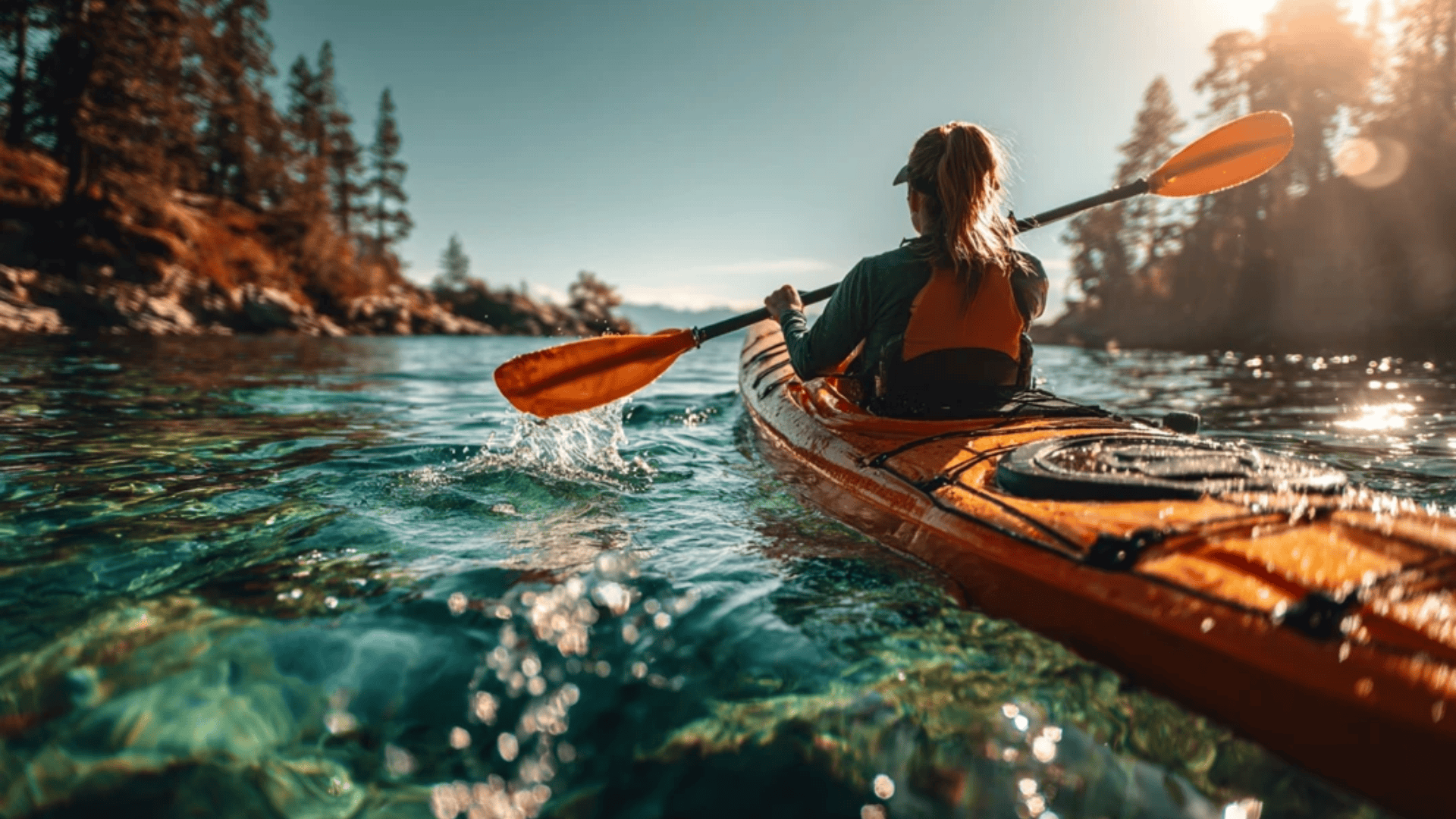
Kayaking provides powerful benefits for both body and mind. This low-impact exercise strengthens multiple muscle groups while staying gentle on joints, making it ideal for people with arthritis or past injuries.
The seated position minimizes stress on the knees and hips while delivering excellent fitness results. Beyond physical conditioning, kayaking promotes mental wellness.
The rhythmic motion of paddling and the calming effect of water help reduce stress and anxiety, while also improving focus and concentration.
Endorphins released during exercise naturally elevate mood, creating a meditative, refreshing experience.
Regular paddling also improves posture by strengthening the back, rhomboids, and rear deltoids, helping correct rounded shoulders and reduce neck pain.
How Many Calories Does Kayaking Burn?
Different kayaking styles burn calories at varying rates depending on intensity and technique. Here’s what you can expect from popular kayaking activities:
| Kayaking Type | Calories Burned per Hour | Intensity Level |
|---|---|---|
| Recreational kayaking | 300-350 calories | Low to moderate |
| Sea kayaking/touring | 350-400 calories | Moderate |
| Whitewater kayaking | 400-500 calories | High |
| Racing/sprint kayaking | 500-600 calories | Very high |
| Kayak fishing | 250-300 calories | Low |
| Stand-up paddleboarding | 300-450 calories | Moderate |
The calorie burn from kayaking rivals that of many gym workouts, while providing the added benefits of fresh air, a connection to nature, and full-body muscle engagement, making it a sustainable long-term activity.
Kayaking for Different Goals
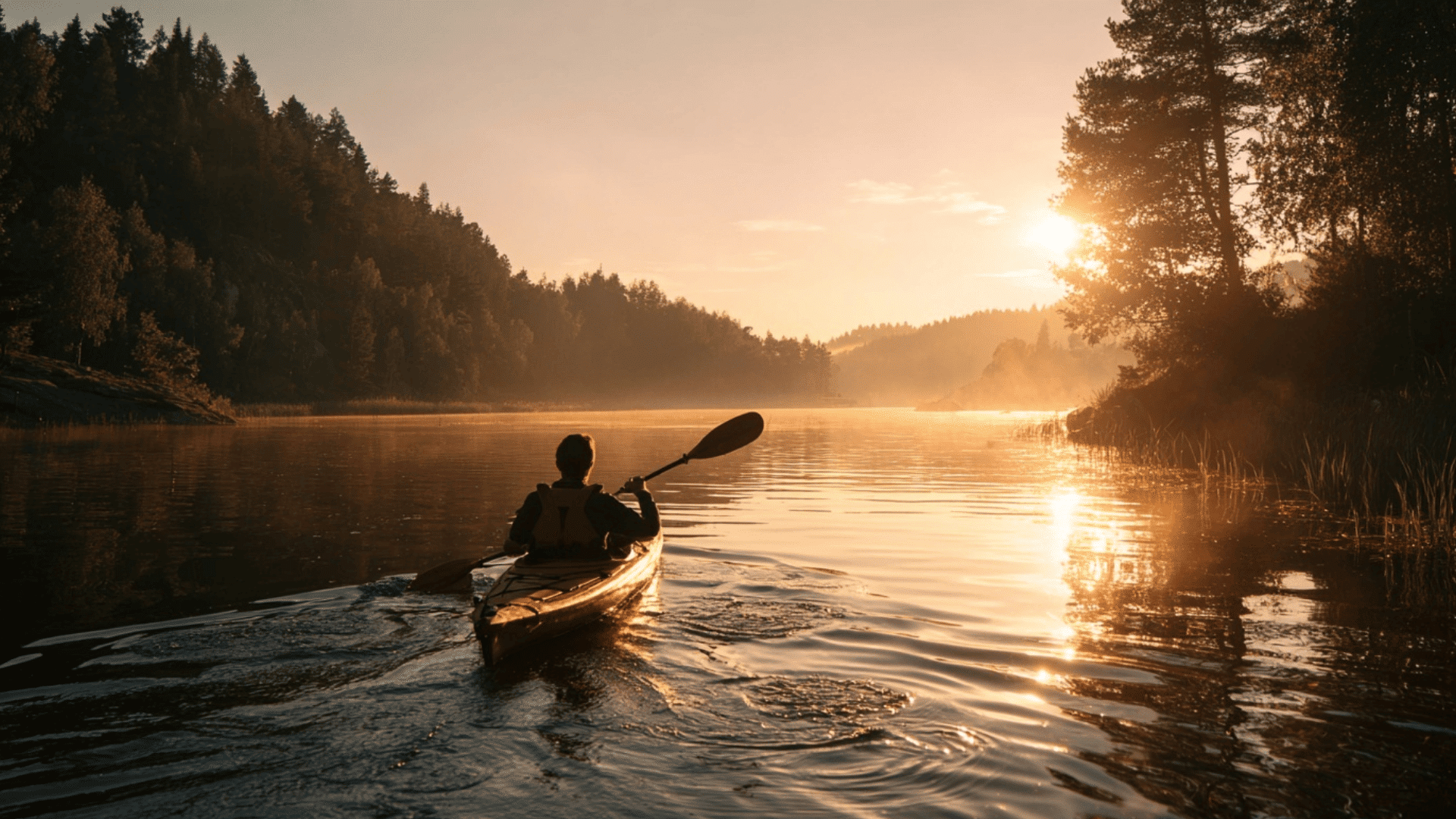
Kayaking can be adapted to different fitness outcomes.
By adjusting pace, distance, and intensity, you can train for strength, endurance, weight loss, or mental wellness while enjoying the unique benefits of being on the water.
1. For Strength Development
Sprint kayaking and high-intensity intervals build upper-body strength and power.
Short bursts of effort followed by recovery improve muscular force, grip endurance, and explosive paddling strength, eliminating the need for traditional gym training.
2. For Endurance Building
Long-distance paddling develops cardiovascular health and muscular stamina. Gradually increasing your distance trains the body to sustain energy, improve efficiency, and build resilience for extended time on the water.
3. For Fitness & Weight Loss
Recreational kayaking offers steady, low-impact cardio that burns calories while being enjoyable.
Combined with a balanced diet, it supports weight management, tones muscles, and keeps exercise fun and sustainable over time.
4. For Mental Wellness
Kayaking boosts mental health by reducing stress and anxiety.
The rhythmic paddling motion and calming water environment create a meditative experience that sharpens focus, lifts mood, and strengthens the mind-body connection.
Tips to Maximize Your Kayaking Workout
Good technique and preparation make paddling more effective and prevent strain.
- Use torso rotation – power strokes with your core, not just your arms.
- Engage back muscles – Lats and rhomboids drive efficiency.
- Shoulder circles – Warm up to protect joints.
- Torso twists – Activate core before paddling.
- Hip and neck stretches – Improve mobility and reduce stiffness.
Proper movement and warm-up routines keep you strong, efficient, and injury-free on the water.
Final Thoughts
Kayaking is far more than a recreational activity. Every paddle stroke engages your shoulders, arms, back, core, and legs, resulting in a truly full-body workout.
The sport builds endurance, strengthens posture, burns calories, and promotes balance, all while keeping joints protected through low-impact movement.
Beyond the physical benefits, kayaking reduces stress, sharpens focus, and encourages a strong mind-body connection thanks to its rhythmic, meditative nature.
It is a rare combination of exercise and adventure that leaves you stronger, healthier, and mentally refreshed.
Now is the time to experience it yourself. Grab a paddle, hit the water, and find out how kayaking can alter both your fitness and wellbeing.





